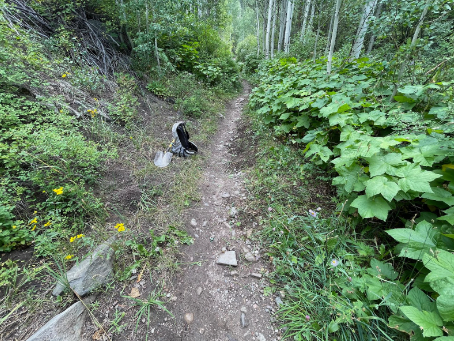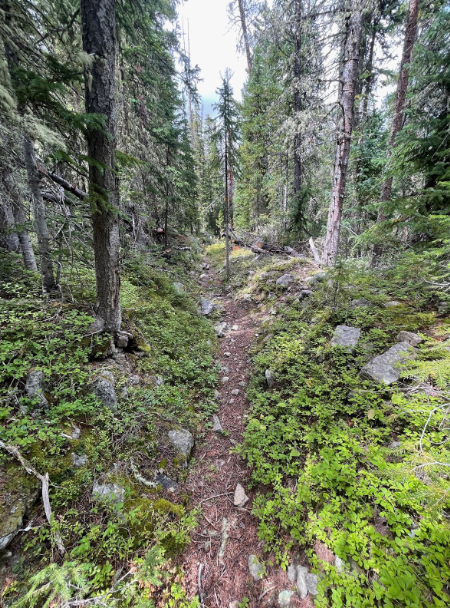We have Cyndi Lauper to thank for bangers like “Girls Just Wanna Have Fun” and “Time After Time.” We also have Cyndi to thank for giving us a last name that would provide many-a-puns to be immortalized by our Adopt A Trail volunteers. There is “Cyndi Loppers,” “I am going to Cyndi Lopper the heck out of this trail,” and many renditions of “Girls Just Want to Have Fun” while happily clearing the corridor along the trail.
While some are quick to dive into the most technical and complicated trail projects, we often forget that sometimes the simplest form of maintenance is one of the most important.
Loppers-a favorite tool of many for their lightness, uncomplicated nature, and providing us with the most social opportunity of trail work-corridor clearing. We can chat and lop, snack and lop, dance and lop, all while providing a vital responsibility in making trails safer.
A trail corridor includes the tread, overhead space, and space on either side of the tread. According to US Forest Service specifications, corridors in the Rockies are cleared 8 feet wide and 10 feet high for trails that permit packstock, and 6 feet wide and 8 feet high for hiking trails.
Cutting back vegetation from either side of the trail can elicit a lot of questions: Doesn’t this cause the trail to erode more? What about the wildflowers? Will it grow back?
The goal is not necessarily to remove everything in our midst but to be mindful of what might be encroaching on the trail that could impact its sustainability. Brushing helps to remove excess vegetation. A few weeks ago, the Sonnenalp Hotel helped clear corridor on Courage Ridge in Minturn. Thimbleberries are abundant this time of year. While they provide a tasty and edible snack on a hike, they are part of the genus Rubus. This includes blackberries and raspberries. For those with a green thumb and knowledge of how these berries grow, they can quickly overtake areas. When we remove certain types of plants from the corridor, it minimizes the competition for other vegetation or saplings to grow.


Cutting back the corridor also helps improve sight lines for trail users. Throughout the Valley, many of our trails are multi-use which could permit everything from hikers, bikers, AND horses to use it. Trails that allow for the multitude of users does come with some risk but to open up the lines of sight, especially for bikers can allow for better visibility when using the trail.
If you are out there for your next trail work event or Wednesday Night Volunteer Crew, grab a pair of loppers and channel your inner Cyndi! In the words of Vail Rec District: “Live. Laugh. Lop.”
